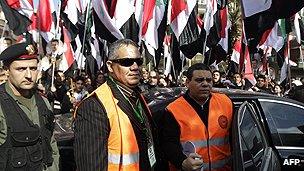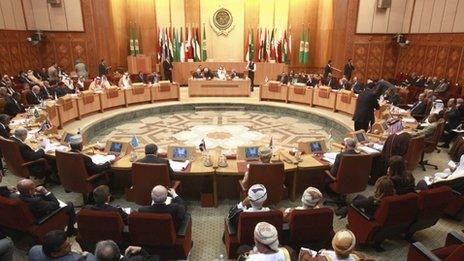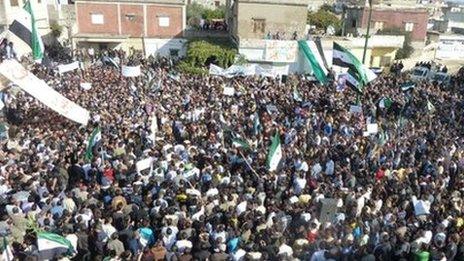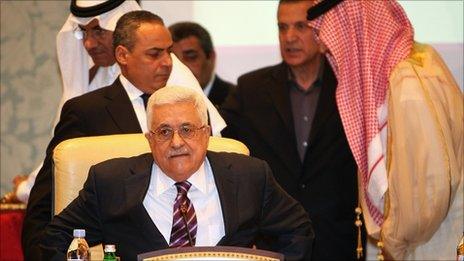Profile: Arab League
- Published

The League of Arab States, or Arab League, is a voluntary association of countries whose peoples are mainly Arabic speaking or where Arabic is an official language.
Its stated aims are to strengthen ties among member states, coordinate their policies and direct them towards a common good.
It has 22 members including Palestine, which the League regards as an independent state.
The idea of the Arab League was mooted in 1942 by the British, who wanted to rally Arab countries against the Axis powers. However, the league did not take off until March 1945, just before the end of the Second World War.
At that time the issues that dominated the league's agenda were freeing those Arab countries still under colonial rule, and preventing the Jewish community in Palestine from creating a Jewish state.
The highest body of the league is the Council, composed of representatives of member states, usually foreign ministers, their representatives or permanent delegates. Each member state has one vote, irrespective of its size. The council meets twice a year, in March and September, and may convene a special session at the request of two members.
Day-to-day, the league is run by the general secretariat. Headed by a secretary-general, it is the administrative body of the league and the executive body of the council and the specialised ministerial councils.
Division between members a big issue
The Arab League's effectiveness has been severely hampered by divisions among member states.
For example, during the Cold War some members were Soviet-oriented while others fell within the Western camp. There has been rivalry over leadership, notably between Egypt and Iraq.
Then there have been the hostilities between traditional monarchies - such as Saudi Arabia, Jordan and Morocco - and new republics, or "revolutionary" states such as Egypt under Gamal Abdel Nasser, Baathist Syria and Iraq, and Libya under Muammar Gaddafi.
The league was severely tested by the US-led attack on Saddam Hussein's Iraq, with some backing the war, some opposing it and others standing on the sidelines.
Because decisions made by the Arab League are binding only on members who voted for them, these divisions have in effect crippled the league in the sphere of "high politics".
'Arab spring' brings new purpose
Thus it failed to coordinate foreign, defence or economic policies, rendering core league documents such as the Treaty of Joint Defence and Economic Cooperation and key bodies such as the Joint Defence Council completely ineffectual.

The Arab League sent monitors to Syria. They were derided by the president and treated with suspicion by the opposition
More recently the League has shown a greater sense of purpose since the "Arab spring" uprisings in early 2011. It backed UN action against Muammar Gaddafi's forces in Libya.
It also suspended Syria over it's repressions of nationwide protests, but its monitoring mission to Damascus fell apart over divisions between member-states who support a UN resolution against the Assad government and those that shy away from "internationalising" an Arab matter.
Where members do agree on a common position, such as support for the Palestinians under Israeli occupation, this rarely if ever goes beyond the issuing of declarations. Perhaps the sole exception has been the economic boycott of Israel, which between 1948 and 1993 was almost total.
However, the Arab League has been a little more effective at lower levels, such as shaping school curricula, preserving manuscripts and translating modern technical terminology. It has helped to create a regional telecommunications union.
- Published2 December 2011

- Published13 November 2011

- Published14 November 2011

- Published21 March 2011
- Published28 May 2011
